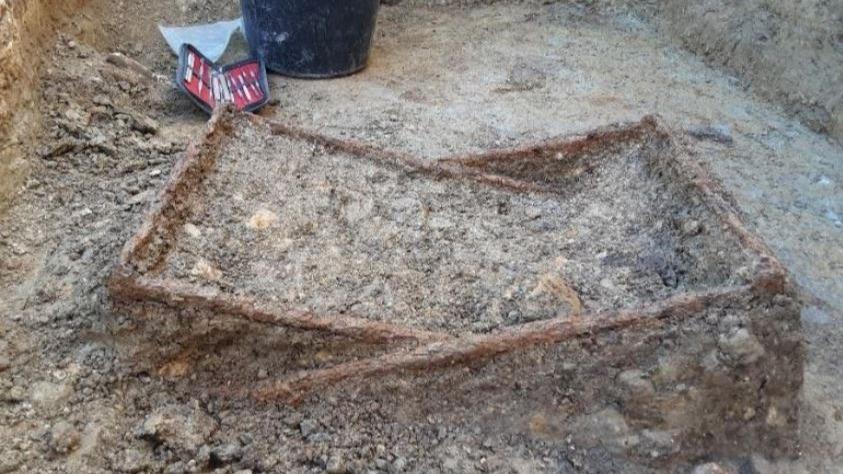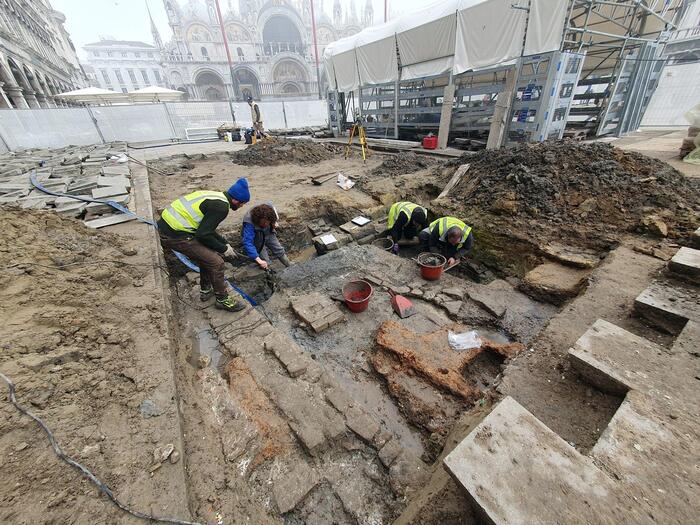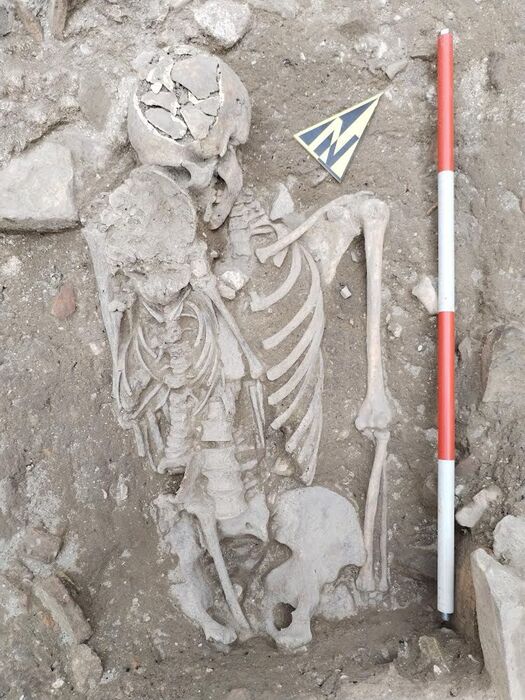Archaeologists from the Bavarian State Office for Monument Protection (BLfD) discovered at the end of August, in Ensdee, a village in southeastern Germany, a rare funerary object in the grave of a woman dating of the Middle Ages.
Died around 1400 years ago, the woman, whose identity remains unknown for the time being, was buried with a folding metal chair.
"This is the second discovery in Germany of an iron folding chair from the early Middle Ages
," says Professor Mathias Pfeil, general curator of the site and director of the Bavarian State Office for Monument Protection in a press release published on August 29.
The chair, which measures approximately 70 centimeters high and 45 centimeters wide, is made of an iron frame, but it is possible that it was also constructed in other materials such as wood and leather, whose traces have disappeared over time.
The iron chair was discovered near the body of a woman of high social status, who died around 1400 years ago.
BLfD
A symbol of authority, power and dignity, the folding chair had been one of the most important official signs in society since Roman antiquity.
Extremely rare - only 26 chair burials in Europe have been discovered, six of which were made of iron - these funerary objects are interpreted by researchers as
"special gifts",
explains the press release.
They indicate that the deceased occupied a superior function or was of a high social rank.
“
Although it is too soon after the excavations for us to know the identity of the woman, we know that she had a high social status, as evidenced by other grave goods found at the burial site
”, stresses Hubert Fehr, Head of Excavations,
SciencePost
.
A necklace, made up of small multicolored glass beads and a belt with several pins were indeed found on the skeleton of the deceased.
A large glass bead with a millefiori pattern (different colors of glass fused together) was also identified by the researchers.
This allowed them to estimate the burial date of the body.
“
Most beads were made of glass at that time, but styles changed rapidly in color and shape.
However, yellow was mainly used around the year 600
,” explains Hubert Fehr.
This colored glass bead, found on the skeleton, allowed researchers to estimate the burial date of the body.
BLfD
The chair was recovered in block form by the researchers and taken to the restoration workshops of the Bavarian State Office for the Preservation of Historical Monuments to be studied.
X-rays could provide details on the condition of the chair and perhaps uncover ornaments.














